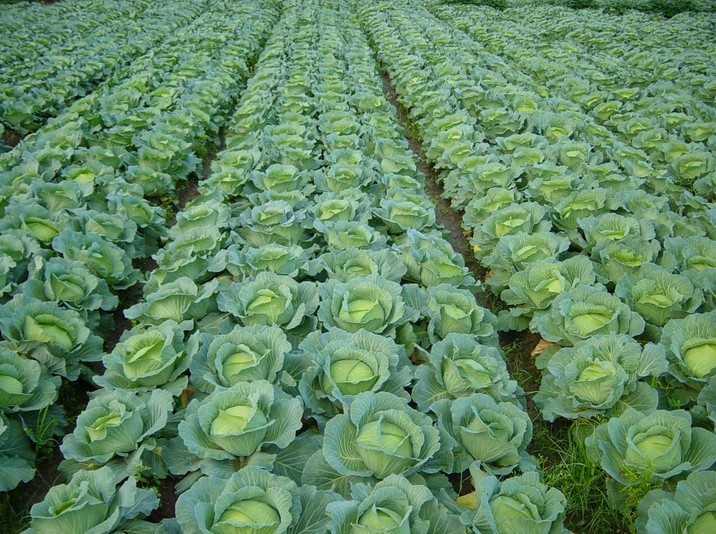
Agriculture is the backbone of the Kenyan economy, contributing to food security and employment of rural households. Climate change has adversely affected this sector and the situation is expected to worsen in the future.
Climate change is likely to contribute substantially to food insecurity in the future, by increasing food prices and reducing food production. Food may become more expensive as climate change mitigation efforts increase energy prices. Water required for food production may become more scarce due to increased crop water use and drought.
What are some of the causes of climate change
Deforestation
Deforestation is the cutting down of trees, which is a primary contributor to climate change. When forests are cut down, much of that stored carbon is released into the atmosphere again as carbon dioxide. This is how deforestation and forest degradation contribute to global warming. The climate scientists believe that carbon dioxide from tropical deforestation now makes up 10 percent of global warming pollution.
Fossil fuel
Fossil fuels are made from decomposing plants and animals. These fuels are found in the Earth’s crust and contain carbon and hydrogen, which can be burned for energy. Coal, oil, and natural gas are examples of fossil fuels.
When fossil fuels are burned, they release large amounts of carbon dioxide, a greenhouse gas, into the air. Greenhouse gasses trap heat in our atmosphere, causing global warming.
Fertilizers containing nitrogen
Intensive farming quickly exhausts the naturally occurring nutrients in the soil, farmers therefore use fertilizers to boost their agricultural output.But fertilizers containing nitrogen produce nitrous oxide emissions, which increases the warming effect on the Earth’s atmosphere. Farmers are advised to use other fertilizers such as green manure and compost, blood meal, bone meal and seaweed extracts are available. Crop rotation can increase the nutrients in the soil naturally.
Powering buildings
Globally, residential and commercial buildings consume over half of all electricity. As they continue to draw on coal, oil, and natural gas for heating and cooling, they emit significant quantities of greenhouse gas emissions. Growing energy demand for heating and cooling, with rising air-conditioner ownership, as well as increased electricity consumption for lighting, appliances, and connected devices, has contributed to a rise in energy-related carbon-dioxide emissions from buildings in recent years.
Producing food
Producing food causes emissions of carbon dioxide, methane, and other greenhouse gases in various ways, including through deforestation and clearing of land for agriculture and grazing, digestion by cows and sheep, the production and use of fertilizers and manure for growing crops, and the use of energy to run farm equipment or fishing boats, usually with fossil fuels. All this makes food production a major contributor to climate change. And greenhouse gas emissions also come from packaging and distributing food.
Effects of climate change
- Hotter temperatures. As greenhouse gas concentrations rise, so does the global surface temperature.
- More severe storms.
- Increased drought.
- A warming, rising ocean.
- Loss of species.
- Not enough food.
- More health risks.
- Poverty and displacement
How should farmers adapt to climate change
- Growing drought-resilient crops
- Fast-Growing Varieties. Legumes such as beans, peanuts, and lentils contribute a third of the protein consumed by humans worldwide. Not only are they an essential source of nutrients, but they also improve the health of soil, bolstering ecosystems in the process.
- Better water management. As water becomes scarce, farmers are beginning to optimize their irrigation methods by choosing an irrigation system that is sustainable and saves water such as drip irrigation.
- Agricultural insurance. Farming is an uncertain endeavor, especially during the climate crisis. With insurance, farmers can have more confidence that they’ll be able to plant again next year if crops fail this time around.
- Precision agriculture. This is an approach to farm management that uses information technology (IT) to ensure that crops and soil receive exactly what they need for optimum health and productivity. The goal of PA is to ensure profitability, sustainability and protection of the environment.
- Urban farming. This has the potential to reduce greenhouse gas emissions associated with food transportation and storage, improve access to highly nutritious foods, clean local air systems, and improve quality of life. Urban farming can be accomplished through vertical gardening if the space is small.
- diversifying crop rotations
- integrating livestock with crop production systems
- improving soil quality
- minimizing off-farm flows of nutrients and pesticides
- implementing more efficient irrigation practices
Climate change is going to be the new normal if we continue to accommodate the things that bring about global warming. If we want a better tomorrow, the change has to start today by everybody taking up their part to make our environment better by doing things such as planting more trees, embracing solar energy, using green manure or compost and using biological control methods during farming.

